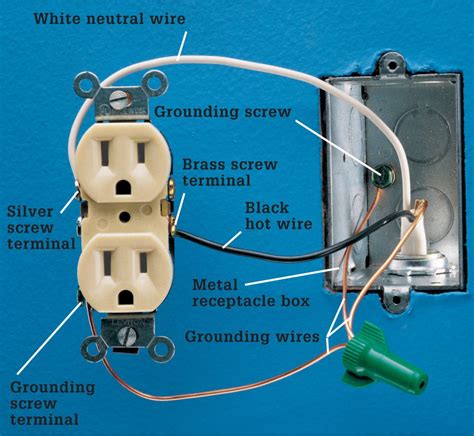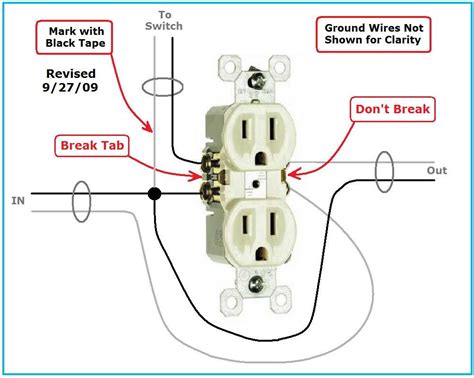electrical code for length of wire in outlet box One of the mistakes often made is over loading an wire electrical box with too many wires. This will cause switches and outlets to not fit correctly and could even cause wires to become damaged. This information will help you plan . Doosan twin turret/twin spindle turning CNC centres are real productivity powerhouses providing precision component manufacturers with two spindles (right and left), two turrets (upper and lower), plus Y-axis and driven tool capability.
0 · receptacle box wiring requirements
1 · receptacle box wiring codes
2 · receptacle box cable installation code
3 · receptacle box cable codes
4 · electrical outlet free conductor length
5 · electrical codes for boxes
6 · electrical box size chart
7 · electrical box installation codes
Full-service, custom fabrication specializing in ASME vessels, skids, process piping, structural welding and machining with on-time delivery.
receptacle box wiring requirements
At least 150 mm (6 in.) of free conductor, measured from the point in the box where it emerges from its raceway or cable sheath, shall be left at each outlet, junction, and switch point for splices or the connection of luminaires or .
The electrical cables that run through walls and in and out of electrical boxes must be both supported and installed with adequate lengths .Code Change Summary: Splices are now permitted in the length of free conductor required at boxes. Having enough wire to work with at a box is important for the electrician who troubleshoots, tests circuitry, or changes a device. For years .One of the mistakes often made is over loading an wire electrical box with too many wires. This will cause switches and outlets to not fit correctly and could even cause wires to become damaged. This information will help you plan .
plastic junction box splice
receptacle box wiring codes
Where nonmetallic-sheathed cable or multiconductor Type UF cable is used, the sheath shall extend not less than 6 mm (1∕4 in.) inside the box and beyond any cable clamp. Except as provided in 300.15 (C), the wiring shall be firmly .
In general, you should leave at least 6 inches of wire in the junction box. When the wire is in a horizontal line, it should come out 3 inches from the opening, and the other 3 inches should be inside the box. I’ll go into more .NEC 210-52 Generally, receptacle outlets in habitable rooms shall be installed so that no point along the floor line (measured horizontally) in any wall space is more than 6 feet from an outlet . Boxes containing 6 AWG and smaller conductors must be sized in an approved manner to provide free space for all conductors, devices, and fittings. In no case can the volume of the box, as calculated in Sec. 314.16 (A), .Where the opening to an outlet, junction, or switch point is less than 200 mm (8 in.) in any dimension, each conductor shall be long enough to extend at least 75 mm (3 in.) outside the .
What size electrical wire should you use when hooking up an electrical receptacle (wall plug or electrical outlet)? Here we explain the choice of No. 14 or No. 12 copper wire for 15A and 20A electrical circuits where receptacles are being wired.
At least 150 mm (6 in.) of free conductor, measured from the point in the box where it emerges from its raceway or cable sheath, shall be left at each outlet, junction, and switch point for splices or the connection of luminaires or devices. The electrical cables that run through walls and in and out of electrical boxes must be both supported and installed with adequate lengths for connections in accordance with these code for proper installation and ease of use.Code Change Summary: Splices are now permitted in the length of free conductor required at boxes. Having enough wire to work with at a box is important for the electrician who troubleshoots, tests circuitry, or changes a device. For years NEC® Section 300.14 has existed to ensure exactly that.
One of the mistakes often made is over loading an wire electrical box with too many wires. This will cause switches and outlets to not fit correctly and could even cause wires to become damaged. This information will help you plan your electrical box size properly.Where nonmetallic-sheathed cable or multiconductor Type UF cable is used, the sheath shall extend not less than 6 mm (1∕4 in.) inside the box and beyond any cable clamp. Except as provided in 300.15 (C), the wiring shall be firmly secured to the box or conduit body. In general, you should leave at least 6 inches of wire in the junction box. When the wire is in a horizontal line, it should come out 3 inches from the opening, and the other 3 inches should be inside the box. I’ll go into more detail below. Leaving the right amount of electrical wire length is crucial for the safety of the wires.
plate metal fabrication
NEC 210-52 Generally, receptacle outlets in habitable rooms shall be installed so that no point along the floor line (measured horizontally) in any wall space is more than 6 feet from an outlet in that space. An outlet shall be installed in each wall space 2 feet or more in width.
Boxes containing 6 AWG and smaller conductors must be sized in an approved manner to provide free space for all conductors, devices, and fittings. In no case can the volume of the box, as calculated in Sec. 314.16 (A), be less than the volume requirement as calculated in Sec. 314.16 (B).
Where the opening to an outlet, junction, or switch point is less than 200 mm (8 in.) in any dimension, each conductor shall be long enough to extend at least 75 mm (3 in.) outside the opening.* The wire coming in to the box should be at least 6 inches from the sheeting and then the additional 3 inches outside the opening.
What size electrical wire should you use when hooking up an electrical receptacle (wall plug or electrical outlet)? Here we explain the choice of No. 14 or No. 12 copper wire for 15A and 20A electrical circuits where receptacles are being wired. At least 150 mm (6 in.) of free conductor, measured from the point in the box where it emerges from its raceway or cable sheath, shall be left at each outlet, junction, and switch point for splices or the connection of luminaires or devices. The electrical cables that run through walls and in and out of electrical boxes must be both supported and installed with adequate lengths for connections in accordance with these code for proper installation and ease of use.Code Change Summary: Splices are now permitted in the length of free conductor required at boxes. Having enough wire to work with at a box is important for the electrician who troubleshoots, tests circuitry, or changes a device. For years NEC® Section 300.14 has existed to ensure exactly that.
One of the mistakes often made is over loading an wire electrical box with too many wires. This will cause switches and outlets to not fit correctly and could even cause wires to become damaged. This information will help you plan your electrical box size properly.Where nonmetallic-sheathed cable or multiconductor Type UF cable is used, the sheath shall extend not less than 6 mm (1∕4 in.) inside the box and beyond any cable clamp. Except as provided in 300.15 (C), the wiring shall be firmly secured to the box or conduit body.
In general, you should leave at least 6 inches of wire in the junction box. When the wire is in a horizontal line, it should come out 3 inches from the opening, and the other 3 inches should be inside the box. I’ll go into more detail below. Leaving the right amount of electrical wire length is crucial for the safety of the wires.NEC 210-52 Generally, receptacle outlets in habitable rooms shall be installed so that no point along the floor line (measured horizontally) in any wall space is more than 6 feet from an outlet in that space. An outlet shall be installed in each wall space 2 feet or more in width. Boxes containing 6 AWG and smaller conductors must be sized in an approved manner to provide free space for all conductors, devices, and fittings. In no case can the volume of the box, as calculated in Sec. 314.16 (A), be less than the volume requirement as calculated in Sec. 314.16 (B).
Where the opening to an outlet, junction, or switch point is less than 200 mm (8 in.) in any dimension, each conductor shall be long enough to extend at least 75 mm (3 in.) outside the opening.* The wire coming in to the box should be at least 6 inches from the sheeting and then the additional 3 inches outside the opening.

receptacle box cable installation code

$79.99
electrical code for length of wire in outlet box|electrical outlet free conductor length